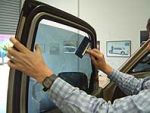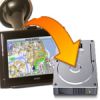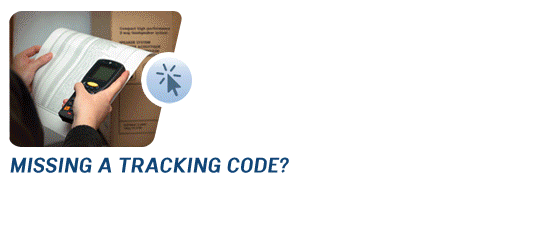Newsletter September 2010
During the last weeks we got some support requests about satellite signal quality and problems receiving a good signal. Please read the related article in this september edition how to deal with receiption problems.
We developed a small tool that helps you to keep your carNAVi in good shape. The carNAVi Backup Tool can backup your settings, like waypoints, tracks and history or can do a full backup of the complete system including navigation software and maps.
A new generation of GPS chipsets is emerging in the market. The new SiRFatlas IV chipset needs less energy resulting in longer battery life, it’s around 25% faster than the old generation and Galileo ready.
The carNAVi Store offers free shipping for GPS devices. To improve our online services for you we ship orders of navigation devices with out any shipping fee within the entire Philippines. Save time and money while shopping online.
Enjoy reading,
Your carNAVi Team
Window tint effects GPS signal receiption
GPS signals travel on a straight path and  reach the earth. However, they are so low powered that they can be easily affected by mountains, thick foliage, buildings and interferences from devices like mobile phones etc. This could cause position and time errors, or sometimes even complete blocking of the signals. In other words, GPS receivers need open sky for their best performance and they work rather well in outdoors than in areas enclosed by tall buildings and other obstructions.
reach the earth. However, they are so low powered that they can be easily affected by mountains, thick foliage, buildings and interferences from devices like mobile phones etc. This could cause position and time errors, or sometimes even complete blocking of the signals. In other words, GPS receivers need open sky for their best performance and they work rather well in outdoors than in areas enclosed by tall buildings and other obstructions.
Metalized films can cause problems with GPS signals and radio broadcasts. A non metal film can be safe to use with GPS systems.
A user wrote: “For many weeks I was experiencing low GPS signal strength and temporary losses of satellite lock. About ten days ago I replaced my possible cheap dealers tint with a new tint without metal film. After testing the GPS with the new tint I found that performance of the GPS receiver had increased significantly. The navigation unit can now lock quickly (30-40 seconds) even while initializing at higher speeds.”
Main problem in this scenario is a totally tinted windshield, while your navi is mainly getting the signals through the front window. If this is tinted with a metal coated tint, the low powered high frequency radio waves from the satellites can simply not go through. There’s only one solution, remove the tint at least in 2/3 of the window or at replace the tint with a non metal coated one.
GPS receiption drops while driving between buildings
GPS signals are very low  powered high frequency radio waves and are absorbed by many objects, mainly by water, steel and concrete.
powered high frequency radio waves and are absorbed by many objects, mainly by water, steel and concrete.
This is why it is not possible to have a qualified signal inside of buildings. Sometimes it is possible to have enough signal strength for the unit to determine a position, then usually the signals can enter the room through a window.
The same situation can happen while driving in narrow streets with high buildings or elevated railway tracks. Since the satellites are spread around the sky – not only on top of you – in some daytime the buildings are shading the signals from those satellites that are quite low on the horizon. This may be temporarily, because the satellites are changing their position which results, that in some time of a day you don’t have enough signal in a certain place but at another time of the day the navi works fine in the same area.
GPS signals carry three kinds of data that help a GPS receiver to determine its exact location. Each satellite has a pseudorandom code and the signals that it transmits contain this code. The pseudorandom code just tells the GPS receiver which satellite transmitted the signal.
Ephemeris data provides the corrections that have to be made to find out the precise location of a satellite in the sky. This information is transmitted by ground stations via satellites and changes every six hours so a GPS receiver has to update it while calculating its exact location.
Almanac contains the position information of the satellites and constantly stored and updated in the memory of the GPS receivers. It is like cookies that help you to get access the websites much faster. In the same way, almanac data helps GPS receivers to remember the position of satellites at a specific time. That is why, after a period of non-use, a GPS receiver requires some time called warm acquisition time to update almanac before calculating the position. This may take as much as ten minutes for most GPS units.
There are many factors that can alter the course of a GPS signal, affecting the accuracy of GPS receiver. Some of the typical errors that GPS receivers are prone to are as follows:
Multi-path signal error: Sometimes, GPS signal get reflected by objects like tall buildings or mountains so takes much longer time to reach a GPS receiver. This may lead to potential time & position errors.
Atmospheric factors: The atmospheric layers like ionosphere and troposphere slow down the speed of GPS signals and this causes delays and time errors. However, most GPS units can minimize this error by applying the average time delay while they calculate the distance traveled by GPS signals.
Satellite visibility:  GPS satellite navigation units need open, unobstructed view from the satellites for greater accuracy. Tall, solid structures like buildings, hills and thick forests highly populated with trees block can affect the quality of GPS signals. As a result, GPS receivers calculate the location with much less accuracy or simply do not work in such conditions. On the contrary, when GPS unit is able to lock signals transmitted from more than three or four satellites, the accuracy is getting better and better.
GPS satellite navigation units need open, unobstructed view from the satellites for greater accuracy. Tall, solid structures like buildings, hills and thick forests highly populated with trees block can affect the quality of GPS signals. As a result, GPS receivers calculate the location with much less accuracy or simply do not work in such conditions. On the contrary, when GPS unit is able to lock signals transmitted from more than three or four satellites, the accuracy is getting better and better.
Other errors: For better accuracy, the satellites should be visible from different directions in the sky rather than all signals reaching the navigation unit from just one or two directions. While calculating a 3D position of a location, this geometrical alignment is crucial. Another type of error may occur when locating the satellites. Satellites do not circle the earth in perfect orbits so the resultant errors need to be corrected with the help of ephemeris data.
Keep your navi in good shape
We developed a new tool that allows users to  backup or restore system settings, waypoints, history information, recorded tracks and saved routes. This windows tool allows to create backups of the settings or the complete navigation system and archive them on your PC. A comfortable restore function is also included as well as restorable default settings.
backup or restore system settings, waypoints, history information, recorded tracks and saved routes. This windows tool allows to create backups of the settings or the complete navigation system and archive them on your PC. A comfortable restore function is also included as well as restorable default settings.
How can I get it?
Download the installer from the software download section on the carNAVi website or use the link below and save the downloaded file on your local computer, for example on your Desktop.
The tool and documentation is available at http://www.car-navi.ph/2010/carnavi-backup-tool/
After downloading double click the installer and follow the instructions. If the installation is finished, you will find a new program group ‘carNAVi Backup’ in your startmenu programs. There you have two icons for creating a full- or a settings backup.
How can I make backups?
To start a backup, please switch on your carNAVi first and while the main menu is showing, connect it to a free USB port of your computer and select the USB connection icon on the touch screen. Then open a backup scheme from Start-Programs-carNAVi Backup.
To restore an archived backup, simply open the backup folder from the carNAVi Backup Startmenu or open c:carNAVi in ‘My Computer’ and double click on one of the files. They are labled with date and time of their creation. Enter a destination path, for example F: and click on restore.
GPS receiver technology – 4th generation
Recently, SiRF, the worlds largest chipmaker for navigation systems, released the SiRFatlas IV, a GPS/Galileo chip that  is being described as a multifunction location system processor and that is meant for Personal Navigation Devices (PNDs). The SiRFatlas IV is a consumer version of the very popular, but rather expensive SiRFprima platform. This system was released last year and provides GPS and high-level multimedia capabilities.
is being described as a multifunction location system processor and that is meant for Personal Navigation Devices (PNDs). The SiRFatlas IV is a consumer version of the very popular, but rather expensive SiRFprima platform. This system was released last year and provides GPS and high-level multimedia capabilities.
Delivering leadership navigation functions, 65nm process technology, and 500 MHz ARM11-fueled multimedia experiences, SiRFatlasIV targets mid range location enabled devices.
The benchmark in it’s class, the new SiRFatlas IV GPS/Galileo 64 channel receiver is 25% faster than former GPS processors by comsuming less energy for longer battery life and faster satellite detection. New carNAVi PRO BT’s are already equipped with the SiRFatlas IV chipset, Galileo ready and future compatible to the new more accurate navigation standard.
Free shipping in the carNAVi Store
The carNAVi Store offers one stop shopping for all your GPS needs.  You can order our navigation systems and all the accessories, plus the store has free and commercial map material for you – download maps directly from the online store. You may pay your orders by cash on delivery within Metro Manila, via nationwide and international banktransfer or with all major credit cards without additional charges using our secure and reliable PayPal express-checkout. Free shipping is available for all items with this logo.
You can order our navigation systems and all the accessories, plus the store has free and commercial map material for you – download maps directly from the online store. You may pay your orders by cash on delivery within Metro Manila, via nationwide and international banktransfer or with all major credit cards without additional charges using our secure and reliable PayPal express-checkout. Free shipping is available for all items with this logo.
PayPal is the safer, easier way to pay online. Pay with your credit card online using the secured and reliable PayPal platform. Plus, speed through checkout whenever you shop online with carNAVi.




